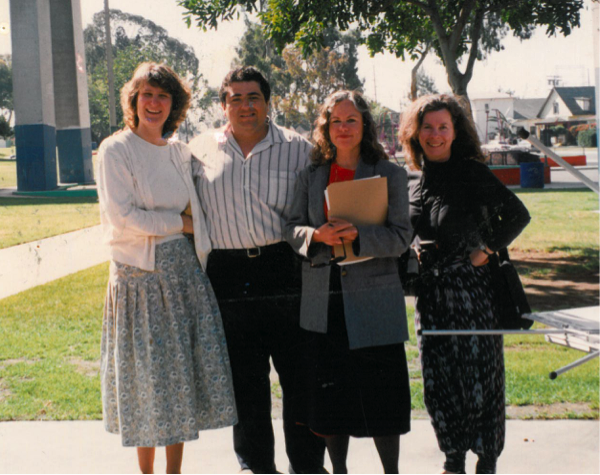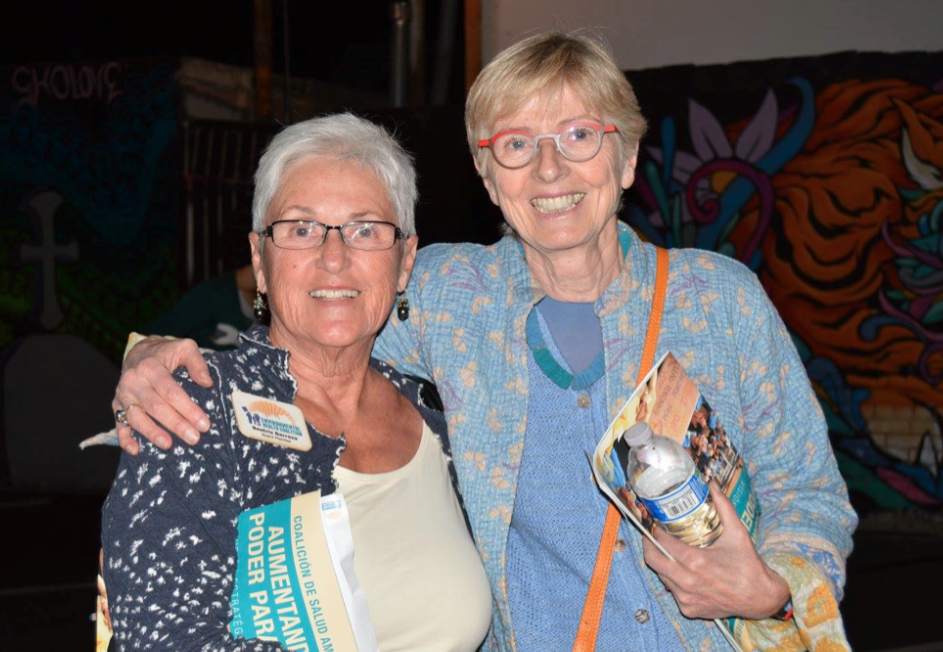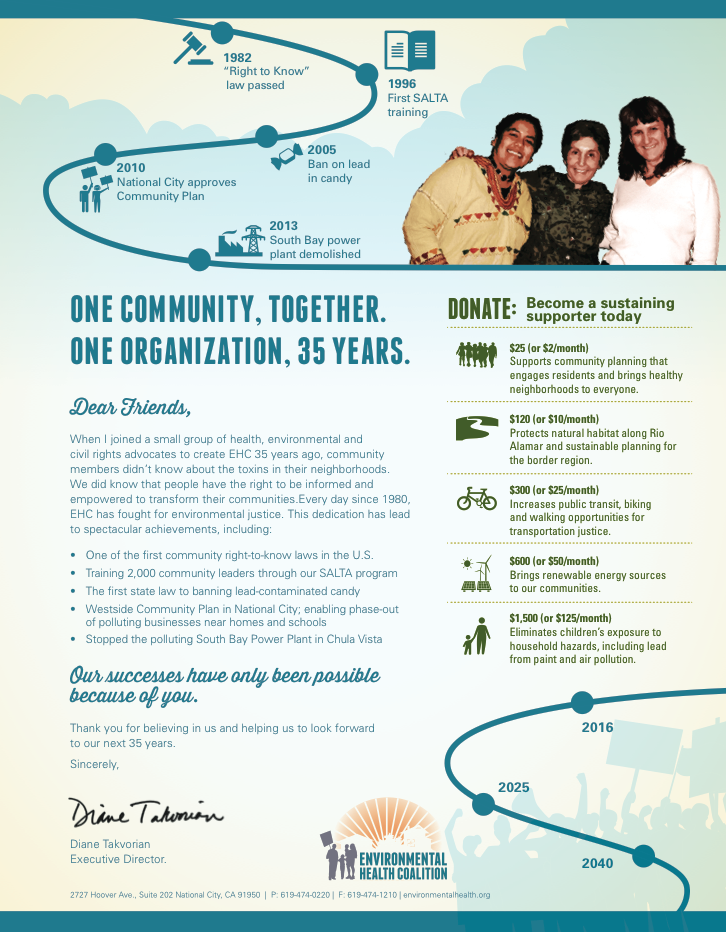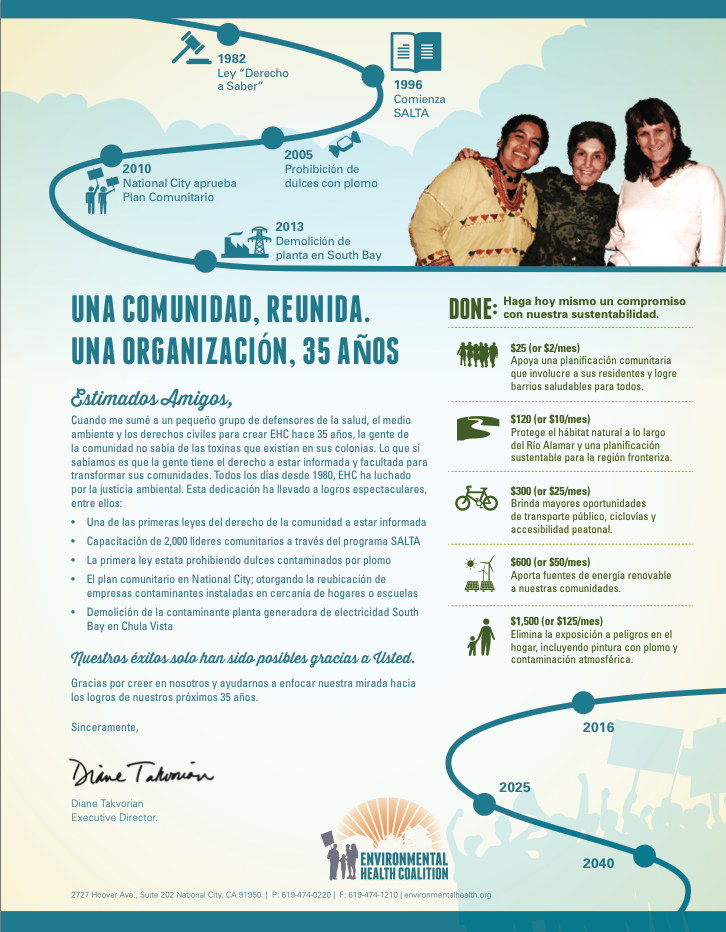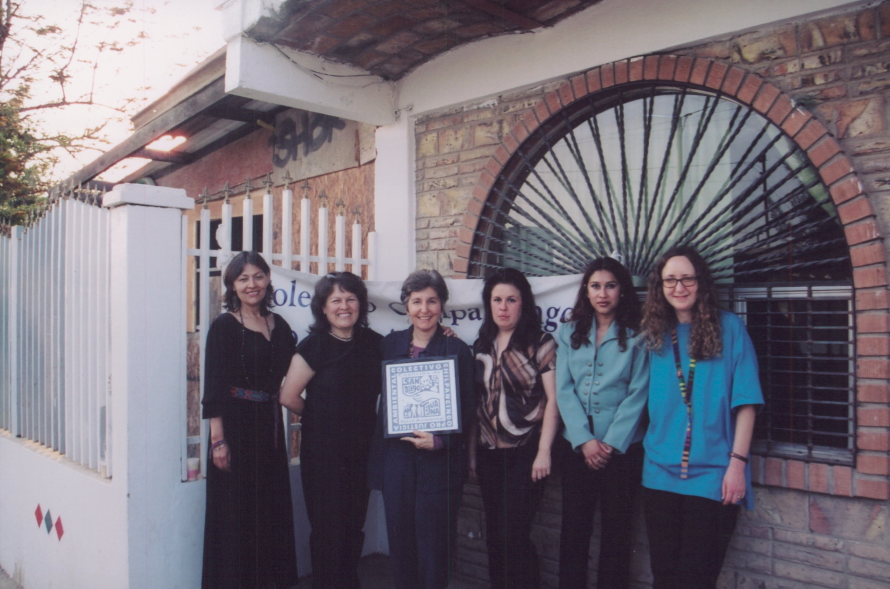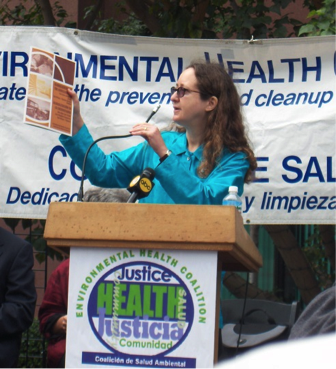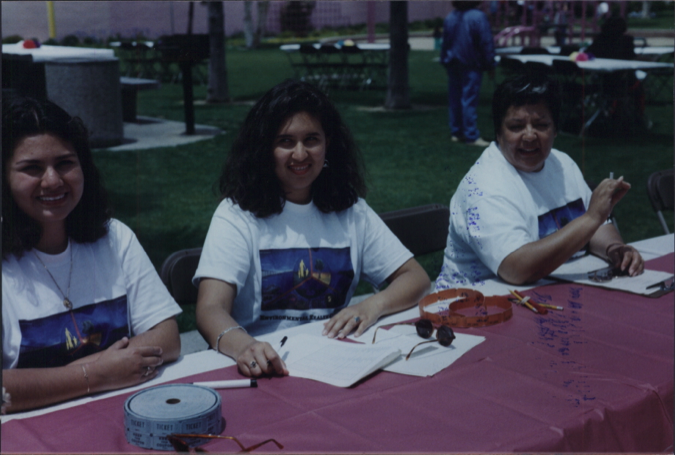
Leticia Ayala (middle) has worked with Environmental Health Coalition for close to 20 years, spearheading the organization’s work to raise awareness about lead in homes and candies and help residents live toxic-free lives. We asked Leticia about her time at EHC, and this is what she recollected.
When and why did you begin working with EHC?
I remember the exact date. It was February 6, 1995, and I wanted to be of service to a non-profit in my community.
What was the organization like in 1995?
Fun! We were a small group but totally dedicated die hards.
What was your role when you first began?
At the beginning I was the office manager. Now I’m the director of the Healthy Kids campaign. But my favorite title ever was given to me from the Union-Tribune as “Co-Worker of Laura Hunter.” We got a good laugh out of that.
Share a milestone that stands out to you.
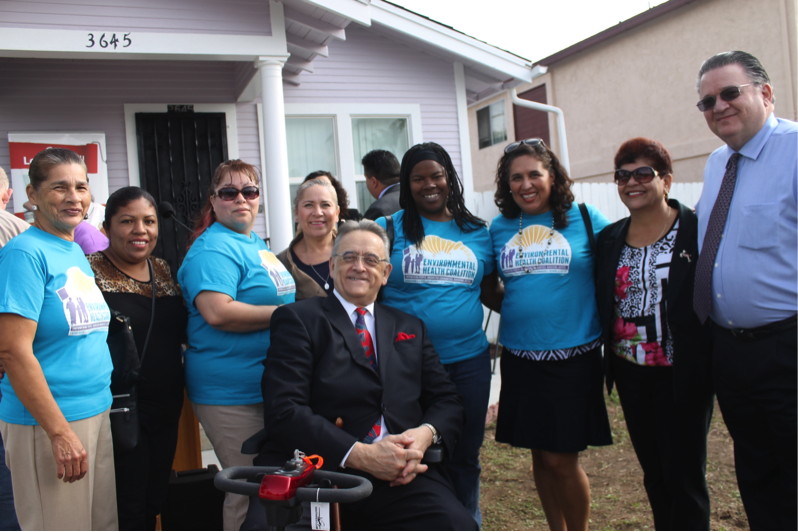
I see our lead-free candy work as one of our biggest accomplishments. It began in one of our Healthy Kids Community Action Team meetings and was truly a grassroots effort. EHC and partners spearheaded the early 2000s movement to regulate lead levels in candy. After a thorough investigation, lawsuit and a statewide law, California now requires candy manufacturers operate within strict legal standards and undergo regular audits to ensure compliance.
As a result, candy sold in stores today has been tested for lead levels and certified as lead free.
It is a true a Latino public health victory, and I'm so proud to have been spearheading this amazing part of EHC history. Today children are eating candies, not poison. The burden on children and parents has been lifted and we can all enjoy our candies and piñatas the way we should.
If you had to describe EHC to someone new, what would you say?
I would tell them we are a bi-national community organization making a big difference in bringing about a healthy, toxic-free environment for our children, families and all living on mother earth. Everyone and everything matters. Si se puede!
To donate to EHC today, please click here.
To learn more about Leticia's work, click here.


